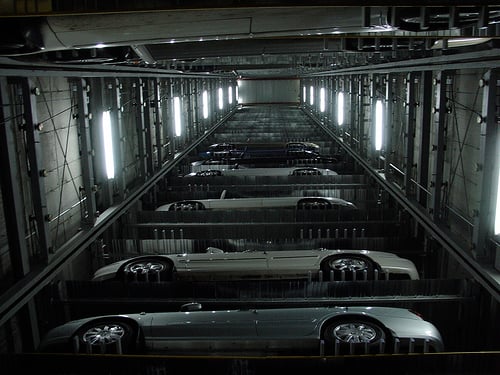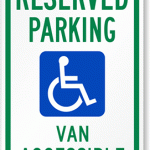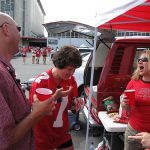Understudied but omnipresent: the economics of parking
Cars are parked for a staggering 95% of the time, and can even create problems that are just as serious as when they are parked compared to when they’re in motion — yet there are very few studies available on the economics of parking. In reality, parking problems are more complicated than drivers just nabbing a free space. One recent study, A Review of the Economics of Parking, from Eren Inci of Sabanci University, analyzes existing and developing parking economics literature, covering topics from parking requirements, spatial competition and pricing, to residential, mall and employer-provided parking. The authors note that “Parking is not just one of the most important intermediate goods in the economy; it is also a vast use of land.”
Although few economists study parking markets full-time, and there aren’t many parking studies available in transportation science, urban planning, and transportation engineering fields, the study explains, analyzing “the economics of parking has a lot to say about how to improve the quality of urban life.” Parking spaces are one of the most significant “intermediate goods” in the modern economy; “most transportation activities are initiated by getting into a parked vehicle and terminated by parking it again.”

A handy study from Eren Inci summarizes the economics of parking. Image from pepleo.
Some of the study’s key points to consider when analyzing parking space economics include:
Cruising for parking: One study reported that drivers lost more than 11 years while cruising for parking in a certain business district. The authors showed, via mathematical modeling, how increasing curbside parking fees may eventually eliminate the destructive and wasteful practice of cruising for parking.
Spatial competition: Parking garages compete with not just other parking garages, but also curbside parking spots.
Minimum and maximum parking requirements: Properly priced parking is important, the study notes, but “quantity issues” — such as, for example, how much parking should be available in a downtown area — are just as significant.
Bottleneck model, road pricing, and parking pricing: A great deal of parking space analysis is devoted to bottleneck model pricing — for example, studying rush-hour traffic dynamics. While optimal road pricing has been shown to be “very effective,” cities rarely practice it (such as by instituting congestion tolling) because of related political risks and high implementation costs.
Various forms of parking: The study also addresses previous studies that have explored residential parking, shopping mall parking, and employer-provided parking, sussing out the impact of, for example, residential parking availability on car ownership; optimal sizing for mall parking lots; and commuter parking costs.
While parking policies have historically been supply-oriented, recent research is moving the focus to “a more market-oriented, demand-focused approach,” the study’s authors report. The impact of parking policy “depends crucially on the level of enforcement;” for example, as one report quoted in the study shows, average traffic speed can be increased by at least 10–15% by limiting double parking — and by up to 44% if double parking was entirely eliminated.
Another key finding is that cities must “better understand” the relationship between moving cars and parked cars (not only by conducting cruising studies, but with research that examines the relationship between parking and people’s choice transportation mode). And, especially necessary, the authors note, are “bridge studies” that “translate scientific insights into detailed policy prescriptions that cities can realistically implement” — so that cities can better address parking and its many under-studied implications on urban life.
Related Posts
Category: Infrastructure, municipal, Parking Tech

















